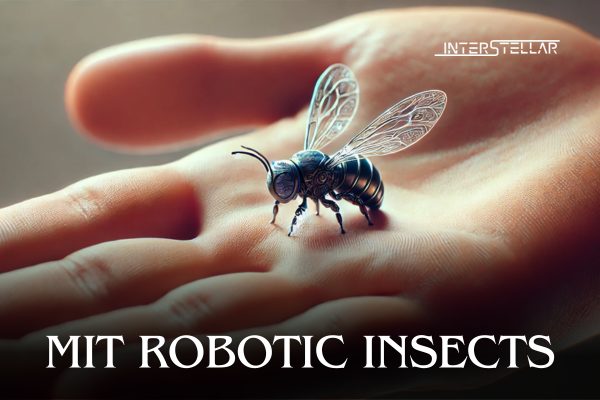MIT Robot Insects to Support Artificial Pollination
Scientists at the Massachusetts Institute of Technology (MIT) have created advanced robotic insects capable of aiding farming through artificial pollination. The MIT robot insects are lightweight and could be particularly valuable in the controlled environments of high-tech vertical farms.
A New Era for Artificial Pollination
Co-lead author Suhan Kim from MIT’s Department of Electrical Engineering and Computer Science (EECS) highlighted the potential applications. “These types of robots open up a very new use case,” Kim explained. “Our robot looks like an insect, and its lightweight and small size allow for precise control. This means it could interact delicately with flowers or leaves, which is crucial for artificial pollination.”
Each robot, weighing less than a paperclip, can hover for approximately 1,000 seconds—over 100 times longer than earlier prototypes. They can also perform complex acrobatic manoeuvres, such as double aerial flips.
Enhanced Design for Stability and Efficiency
The new robotic design is half the size of earlier versions, providing improved stability and freeing space for electronics. This innovation lays the groundwork for adding essential components like circuit boards, batteries, and sensors.
Kim explained, “We are focused on optimising the robot design to carry higher payloads, enabling it to include these critical elements. This could eventually allow for autonomous flight outside the lab.”
In the long term, this technology could revolutionise crop production in vertical farms—multi-level warehouses growing plants in controlled environments—by improving artificial pollination methods. This innovation could boost crop yields significantly in these settings.
Addressing Challenges in Indoor Farming
Vertical farming is gaining traction globally as a solution to food security challenges caused by population growth, climate change, and geopolitical disruptions. However, natural pollinators, like honeybees, face limitations in these environments.
Kim added, “This doesn’t mean we aim to replace honeybees entirely. However, indoor farms often can’t rely on honeybees due to safety or environmental concerns. In such cases, robotic insects could become a useful tool.”
Although the robotic insects are not yet as effective as natural pollinators, the researchers aim to refine their flight time and precision. Future versions may be capable of landing and taking off directly from flower centres, enhancing their pollination capabilities.
The study was published in the journal Science Robotics.
With inputs from Reuters





